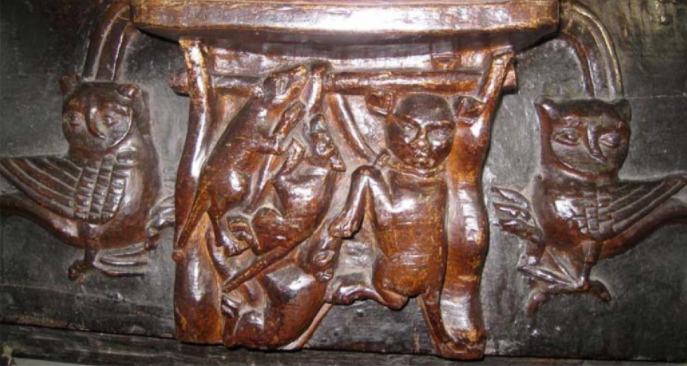A misericord, also known as a mercy seat,[1] is a wooden ledge on the underside of a folding seat in a church which, when the seat is folded up, is intended to support a member of the congregation in a partially standing position during long periods of prayer. The daily offices of the medieval Church, Matins, Lauds, Prime, Terce, Sext, None, Vespers, and Compline followed by the recitations of psalms, canticles and hymns were physically demanding, particularly for the infirm, as they required standing for extended periods of time, often with arms outstretched. At some time towards the end of the 12th century, literally as an act of mercy – misericordia is the Latin for “mercy” – seats began to be installed in the choir stalls.[2]
The seat was fashioned from a piece of solid wood, and to reduce weight much of the material below the supporting leading edge was removed, providing “an opportunity for much lively carving”.[3] The production of misericords ceased with the Dissolution of the Monasteries under King Henry VIII, between 1536 and 1541.[4]
Symbolism
Of the 3600 surviving English misericords, an estimated 10 per cent of the total produced, very few appear to be overtly religious,[4] although as the historian Julia Creswell has suggested, that may be because we are no longer attuned to the symbolism of a largely illiterate age.[5] About half of the carvings show figures; the rest are of vegetables or merely decorative.[4] Half of the carved figures are of animals, many of them hybrids composed of body parts from different animals, “an excellent source of good illustrations of mythical beasts”, as being within the church building they were protected from the elements.[5]
Misericords may also have made social statements, such as one from Great Malvern Priory depicting rats hanging a cat. It is probably a representation of the satirical episode the “Belling of the Cat” from Piers Plowman, in which a council of rats and mice – the common folk – hold a council to determine how best to deal with the cat, the royal court.[6]

